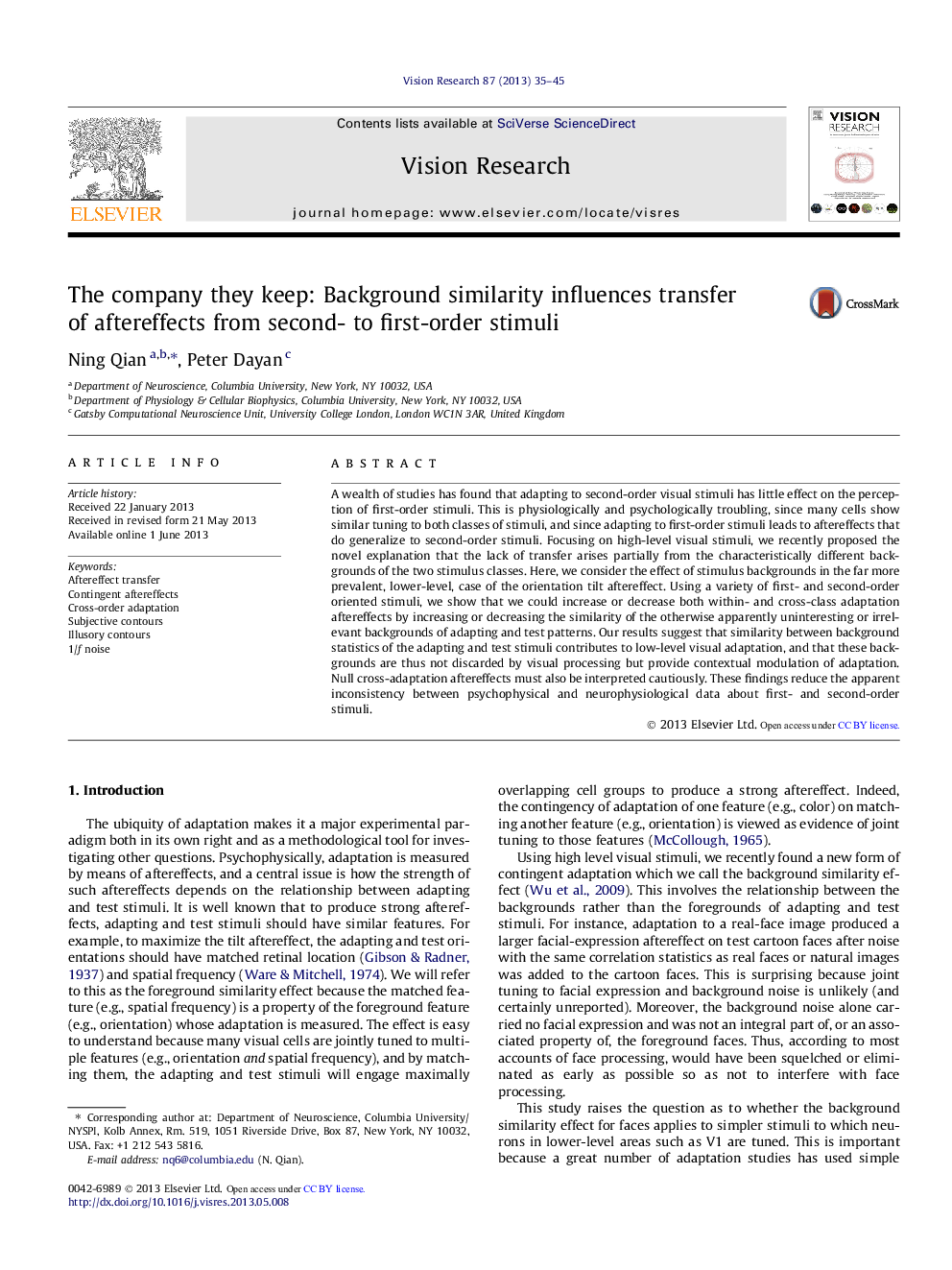| کد مقاله | کد نشریه | سال انتشار | مقاله انگلیسی | نسخه تمام متن |
|---|---|---|---|---|
| 6203610 | 1603207 | 2013 | 11 صفحه PDF | دانلود رایگان |
- Task irrelevant backgrounds of adapting and test stimuli influence tilt aftereffect.
- Matched backgrounds enable transfer from second to first-order orientations.
- Mismatched backgrounds reduce normally large, within-order aftereffects.
- This background similarity effect is robust for weak foreground orientations.
- Null aftereffect in many studies may be partially caused by a background mismatch.
A wealth of studies has found that adapting to second-order visual stimuli has little effect on the perception of first-order stimuli. This is physiologically and psychologically troubling, since many cells show similar tuning to both classes of stimuli, and since adapting to first-order stimuli leads to aftereffects that do generalize to second-order stimuli. Focusing on high-level visual stimuli, we recently proposed the novel explanation that the lack of transfer arises partially from the characteristically different backgrounds of the two stimulus classes. Here, we consider the effect of stimulus backgrounds in the far more prevalent, lower-level, case of the orientation tilt aftereffect. Using a variety of first- and second-order oriented stimuli, we show that we could increase or decrease both within- and cross-class adaptation aftereffects by increasing or decreasing the similarity of the otherwise apparently uninteresting or irrelevant backgrounds of adapting and test patterns. Our results suggest that similarity between background statistics of the adapting and test stimuli contributes to low-level visual adaptation, and that these backgrounds are thus not discarded by visual processing but provide contextual modulation of adaptation. Null cross-adaptation aftereffects must also be interpreted cautiously. These findings reduce the apparent inconsistency between psychophysical and neurophysiological data about first- and second-order stimuli.
Journal: Vision Research - Volume 87, 19 July 2013, Pages 35-45
